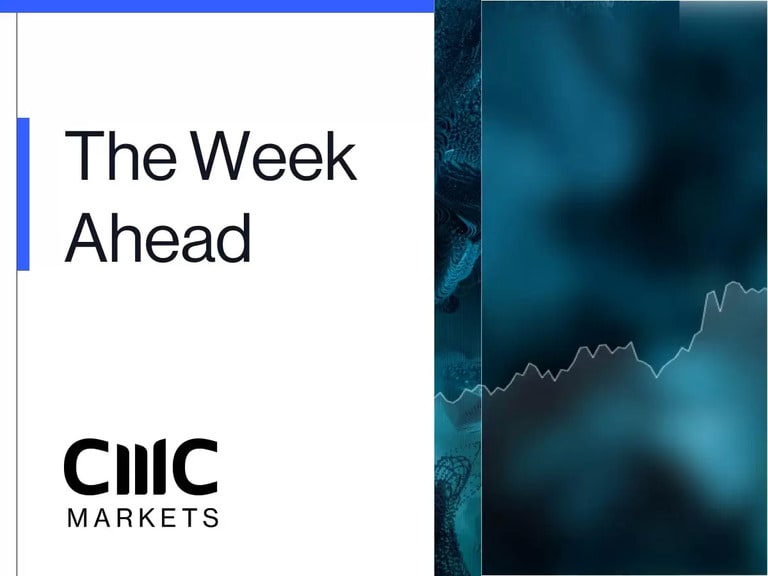The stock market rollercoaster continued yesterday, as European markets, after opening sharply lower in the aftermath of Wednesday’s sharp post Fed sell off, slowly peeled themselves off the canvas. The rebound in the FTSE100 saw the UK benchmark recover all of its early week losses to finish the day within touching distance of the 7,600 level.
US markets also managed to pick themselves up after the late day sell-off on Wednesday with the Nasdaq 100 giving up a 3.5% gain. Yesterday it tried to repeat the trick, rising as much as 1.7%, before closing the day 1.4% lower, the second day in a row we’ve seen a swing of more than 3%, and the first time we’ve seen these sorts of swings since the 1980’s.
While markets in the US have been swinging wildly between positive and negative territory, as investors there try and make sense of the Federal Reserve’s intentions, it’s important to note that we haven’t broken below the lows that we put in on Monday.
Markets in Europe have found it difficult to decouple from the volatility being seen over in the US, however they are proving to be slightly more resilient, with the FTSE100 outperforming, and managing to recover its losses for the week, while the DAX and CAC40 have come back to within touching distance of doing the same thing, as we look towards a broadly mixed open for European stocks later today.
Today we’ ll get the latest Q4 GDP numbers from both France and Germany, with the French economy set to grow 0.5% in the final quarter of 2021. The German economy, on the other hand is expected to contract by 0.3%, a significant drop from the 1.7% growth we saw in Q3, largely due to the disruption caused by first Delta, and then the Omicron variant, and finally by the huge surge in energy prices, that forced large parts of the manufacturing sector to close.
We then get to see the latest inflation, as well as personal spending and income numbers from the US economy for December.
The recent headline CPI and PPI numbers may well have offered a ray of hope for Fed officials that the latest surge on inflation pressures might be starting to show signs of plateauing, although to listen to Fed chair Jay Powell earlier this week, the consensus on that appears to have shifted markedly.
It now looks like there is a resigned acceptance that the FOMC is behind the curve, and that action needs to be taken to get on top of inflation.
Nonetheless they will still be hoping that some of the recent rise in prices starts to come out of the headline rate, and in recent months there has been some faint signs that might well be happening if the recent PPI numbers for December are any indication, after we saw a fall back to 9.7% from 9.8% in November in a sign that supply chain pressures might be easing.
Today’s core PCE deflator numbers aren’t likely to offer much comfort on that score. In the space of two months core PCE has gone from 3.7% to 4.7% in November, and look set to come in at 4.8% in December, its highest levels since 1983.
For now, consumers don’t appear to be showing any indication that they are feeling the effects of the rise in the cost of living, however that is likely to change over time.
Personal spending has been strong these past few months, however we can expect this to slow in December, to -0.6%, and the lowest level since April 2020, when the US economy was locked down, as US consumers slowed their spending in the lead-up to Christmas due to the sharp spread of the Omicron variant. Personal income is expected to rise by 0.5%
EUR/USD – has broken below the November lows as well as the June 2020 lows, which could well open a test of the 1.1000 area, on the way to 1.0800. Pullbacks are now likely to find resistance at the 1.1270 area.
GBP/USD – slid below the 50-day MA and 1.3430 area, which is now likely to act as resistance. The move through 1.3370 could well see further losses towards the December lows at 1.3160.
EUR/GBP – on course for a retest of the 0 8305 lows, as well as the 0.8280 area. Resistance remains at the highs at the 0.8420 area.
USD/JPY – moved back to the 115.30 area which now opens up a retest of the highs at 116.25. Support remains down near the recent lows at 113.80.
CMC Markets erbjuder sin tjänst som ”execution only”. Detta material (antingen uttryckt eller inte) är endast för allmän information och tar inte hänsyn till dina personliga omständigheter eller mål. Ingenting i detta material är (eller bör anses vara) finansiella, investeringar eller andra råd som beroende bör läggas på. Inget yttrande i materialet utgör en rekommendation från CMC Markets eller författaren om en viss investering, säkerhet, transaktion eller investeringsstrategi. Detta innehåll har inte skapats i enlighet med de regler som finns för oberoende investeringsrådgivning. Även om vi inte uttryckligen hindras från att handla innan vi har tillhandhållit detta innehåll försöker vi inte dra nytta av det innan det sprids.






